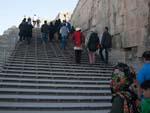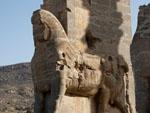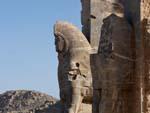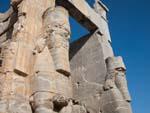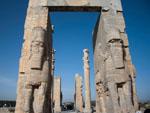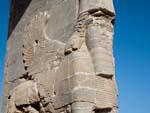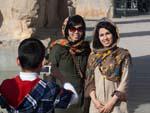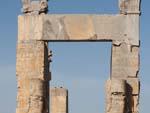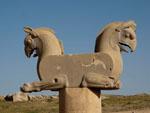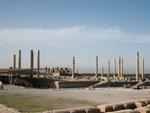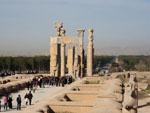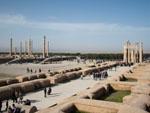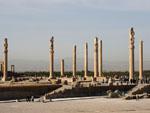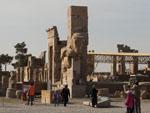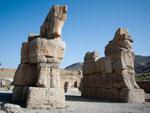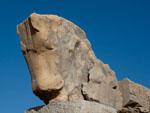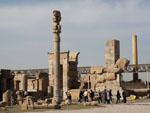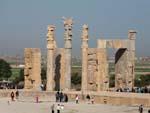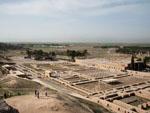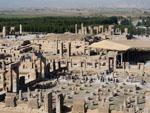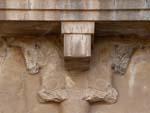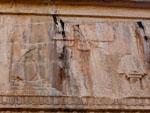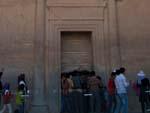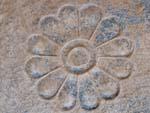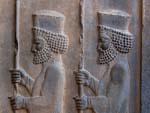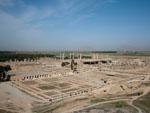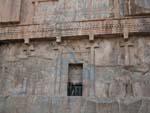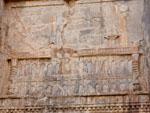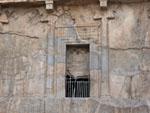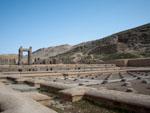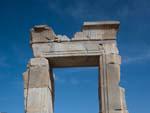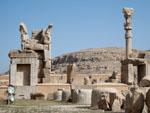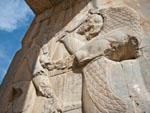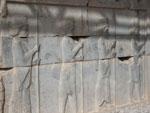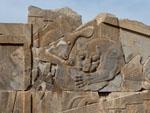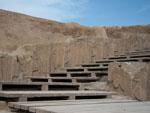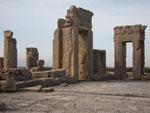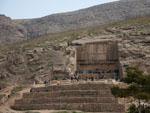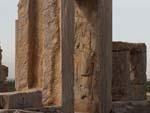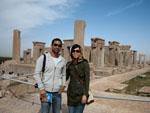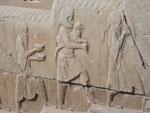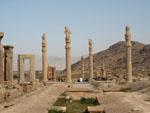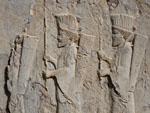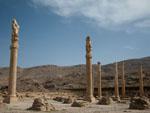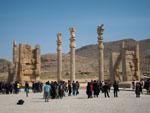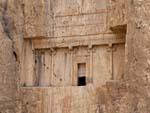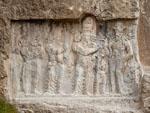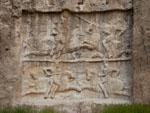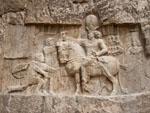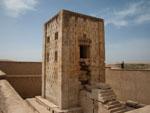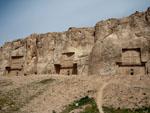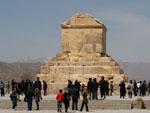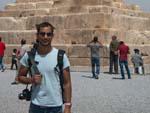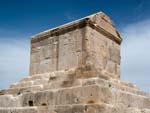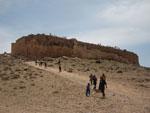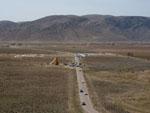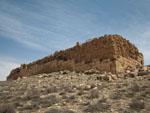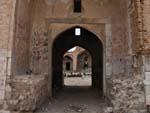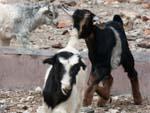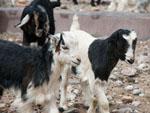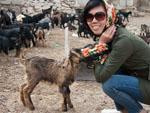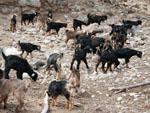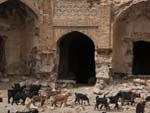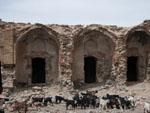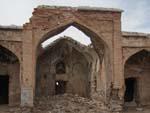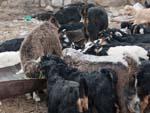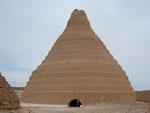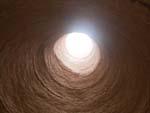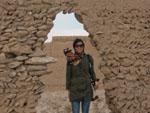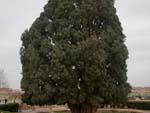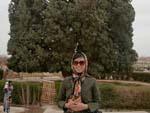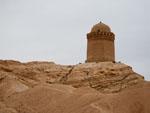We awoke early for a 7am start to meet our driver who would take us from Shiraz to Yazd stopping along famous sites – Persepolis, Naqsh-e Rostom, Pasargadae and through the small town of Abarqu before reaching Yazd. In total, the journey would take us over 500km. Soon into our trip we realised our driver, Morteza Mehrparvar, was quite a comical character, which made our long car trip much more enjoyable. He had been in the tourism industry for the past seventeen years (which he reminded us a number of times during the trip), and had many stories to tell. He was even listed in the 2000, 2004 and 2008 editions of the Lonely Planet – “page 271” he proudly said.
thydzikgooglemap(http://sonyaandtravis.com/maps/iran-shiraz-to-yadz.xml)
Persepolis
Similar to the sites in Shiraz, Persepolis was packed with local Iranian tourists. We explored the sites in awe of the beautiful creations of the ancient Achaemanid Empire, during reign of Darius the Great. It was clear that Persepolis was once a magnificent city. My favourite features were the staircases – each step consisting of a relief mimicking the ancient customs of bringing gifts to the palaces.
thydzikgooglemap(http://sonyaandtravis.com/maps/iran-persepolis.xml,s)
Naqsh-e Rostom
Next we stopped off at Naqsh-e Rostom, a site consistent of impressive rock tombs off Darius I, Darius II, Artaxerxes I and Xerxes I located on a smooth mountain face. A number of detailed reliefs/murals depicting war, victory across the ages are also carved on the rockface surrounding the tombs. Nearby is Kaba Zarosht, a monument that was thought to be a Zoroastrian Fire Temple but is now regarded to be a treasury of some sort.
thydzikgooglemap(http://sonyaandtravis.com/maps/iran-naqshe-rostom.xml,s)
Pasargadae
The first thing we saw upon reaching Pasargadae was the tomb of Cyrus the Great – a high rectangular tomb. It seemed a little unimpressive for a ruler who was so highly regarded in Persian history. Further along was the Pasargadae site, which was much less reconstructed in comparison to Persepolis but worth the visit.
thydzikgooglemap(http://sonyaandtravis.com/maps/iran-pasargadae.xml,s)
Sassanian ruins
Morteza also took us on a slight detour to visit an old run down site which was from the Sassanian period. It was completely deserted (unlike all the other sites we’d visited), aside from a local family who had setup a few troughs to feed a group of baby goats inside the building… Apparently they were from the nearby mountains but weren’t getting enough food. We enjoyed a cup of hot tea here whilst admiring the nearby snow capped mountains.
Abarqu
Our last stop before Yazd was in Abarqu – here we visited the icehouse – a massive circular pyramid structure which once stored ice from winter’s snow for the hot summers, a 4000+ year old Cyprus tree (although Morteza suspects it is only 1000 years old) and Gombad Ali Dome built in the 11th century.
thydzikgooglemap(http://sonyaandtravis.com/maps/iran-abarqu.xml,s,450,169)




































































































